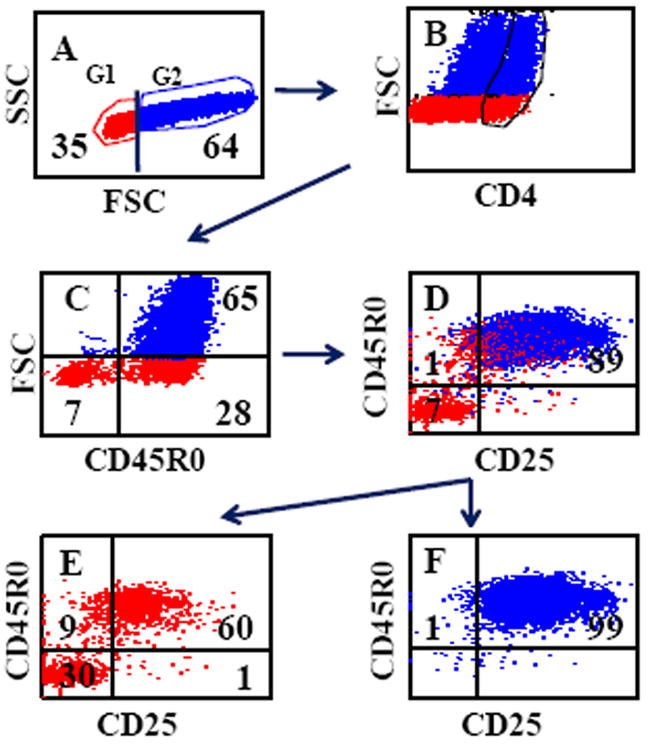FIG. 1.

Gating strategy used to determine the frequency of activated CD4 memory T cells. Electronic gates 1 and 2 were placed on small unactivated and large activated cells (SSC vs FSC) and color coded to identify T cells proliferating in response to antigen stimulation (A). An additional electronic gate was used to isolate CD4 T cells to determine the frequency of CD45R0/CD25+ CD4 memory T cells proliferating in response to antigen stimulation (B). (C) Shows the frequency of activated CD4 memory T cells (FSC vs CD45R0). (D) Shows that resting and activated CD4 memory T cells express CD25. A combination of electronic gates placed on small unactivated or activated CD4 T cells, (E) and (F) respectively, were used to show that only unactivated and activated memory T cells express CD25. No naïve CD4 cells express CD25 (lower left quadrant in E). All activated memory CD4 T cells express CD25 (F). This observation has allowed us to use FSC vs CD45R0 to determine the frequency of activated CD4 memory T cells (C). The same gating strategy was used to determine the frequency of activated memory CD8 cells.
